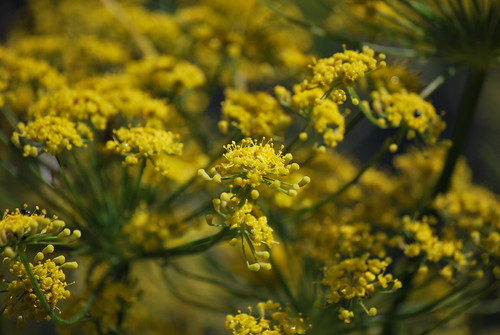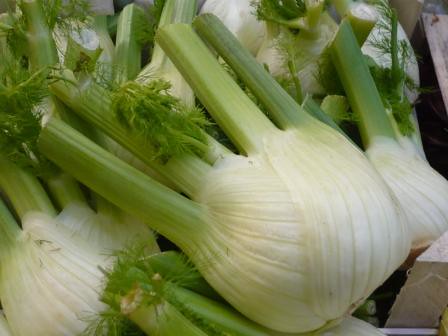Growing Fennel for Home Cooking
Fennel is a fine herb and aniseedy tasting vegetable that you can grow and cook at home from a simple packet of seeds. You can eat the bulb, leaves and stems fresh then save the seeds to eat in dried form.
Growing Varieties of Fennel
- Sow seeds April to July. Prepare the ground well and rake to a fine tilth before sowing. Sow outdoors where they are to grow, ½in deep in rows 15in apart.
- When large enough to handle thin out to 9in apart.
- Prefers a well drained soil in full sun and should not be allowed to dry out. The bulbs of Florence Fennel should be watered well in dry weather.
- Soil needs to be drawn around the bottom of the bulbs when it reaches the size of a golf ball. After it has reached this size it should more than double in size over the next 2-3 weeks this is when it is ready to harvest.
- The hardy perennial Fennel Victoria F1 Hybrid Seeds
available from Thompson & Morgan produce bulbs that can be harvested July to October. - Outstanding yields of large, smooth and pure white bulbs with an enticing and traditional aniseed flavour. Fennel Victoria is a newly bred form which has neat foliage and improved resistance to bolting.
- Foeniculum vulgare is the normal green form with Foeniculum ‘Purpureum’ a bronze-leaved” fennel that is grown as a decorative garden plant.
Fennel Herb ‘Foeniculum vulgare’Â seeds from Thompson & Morgan produce fine foliage useful for cooking purposes and the flowers are yellow. It can be prone to bolting after seeds are transplanted.
Cooking Home Grown Fennel
Use the frondy leaves to flavour delicate dishes
‘Fennel is delicious, with a sweet and delicate aniseed flavour. Use in salads and with fish to counteract oiliness.
Beauty: An infusion of Fennel used as a compress is excellent for softening rough chapped hands. Pour hot water over the leaves and stems for a cleansing facial steam bath.
Nature’s Remedy: Reputed use for many ailments, particularly regularising painful and abnormal menstrual periods. It has long been recommended to combat obesity and aid slimming, as an eyewash for sore eyes and as a gentle laxative. Steep 1 tablespoonful of freshly crushed seeds in 1 cup of water for 5 minutes. Sweeten with honey to taste.’

Credits
Fennel by Satrina0, CC BY-NC-ND 2.0
Fennel (Foeniculum vulgare) by epicnom CC BY-NC 2.0 ‘Beautiful herb, long used and appreciated for it’s many medicinal uses. It has also been used as a flavouring for many things, including toothpaste. Fennel tea, made from the seeds, is very good for mild digestive problems and can be helpful for menopausal symptoms.It is lovely to grow, as it attracts hoverflies and bees.’

